Hillel Taub-Tabib
Hierarchy Builder: Organizing Textual Spans into a Hierarchy to Facilitate Navigation
Sep 18, 2023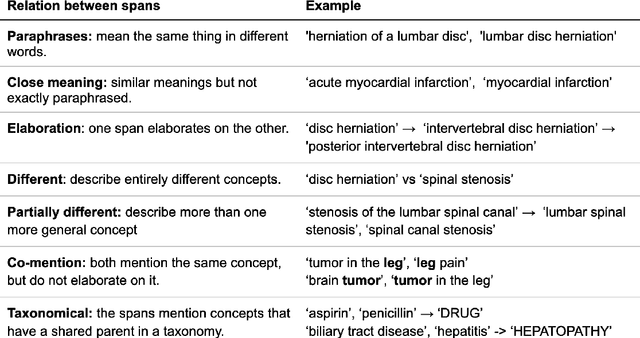
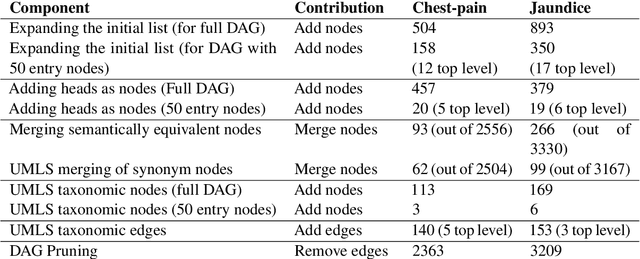
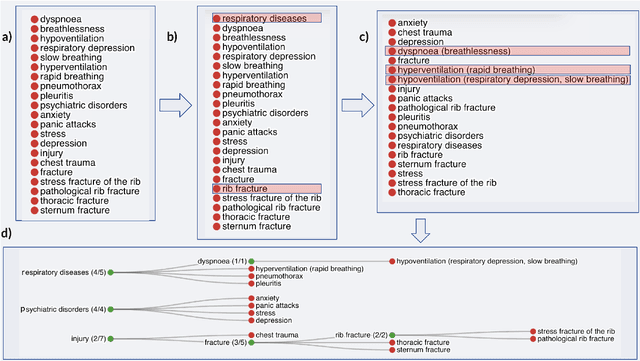
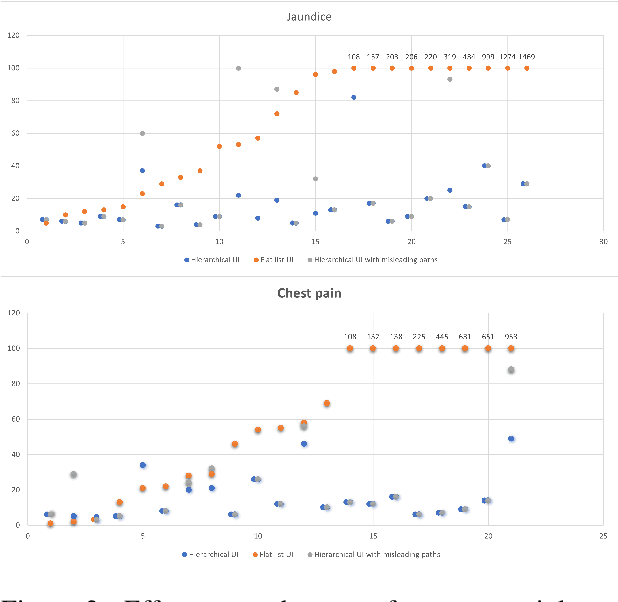
Abstract:Information extraction systems often produce hundreds to thousands of strings on a specific topic. We present a method that facilitates better consumption of these strings, in an exploratory setting in which a user wants to both get a broad overview of what's available, and a chance to dive deeper on some aspects. The system works by grouping similar items together and arranging the remaining items into a hierarchical navigable DAG structure. We apply the method to medical information extraction.
* 9 pages including citations; Presented at the ACL 2023 DEMO track, pages 282-290
A Dataset for N-ary Relation Extraction of Drug Combinations
May 04, 2022



Abstract:Combination therapies have become the standard of care for diseases such as cancer, tuberculosis, malaria and HIV. However, the combinatorial set of available multi-drug treatments creates a challenge in identifying effective combination therapies available in a situation. To assist medical professionals in identifying beneficial drug-combinations, we construct an expert-annotated dataset for extracting information about the efficacy of drug combinations from the scientific literature. Beyond its practical utility, the dataset also presents a unique NLP challenge, as the first relation extraction dataset consisting of variable-length relations. Furthermore, the relations in this dataset predominantly require language understanding beyond the sentence level, adding to the challenge of this task. We provide a promising baseline model and identify clear areas for further improvement. We release our dataset, code, and baseline models publicly to encourage the NLP community to participate in this task.
Large Scale Substitution-based Word Sense Induction
Oct 14, 2021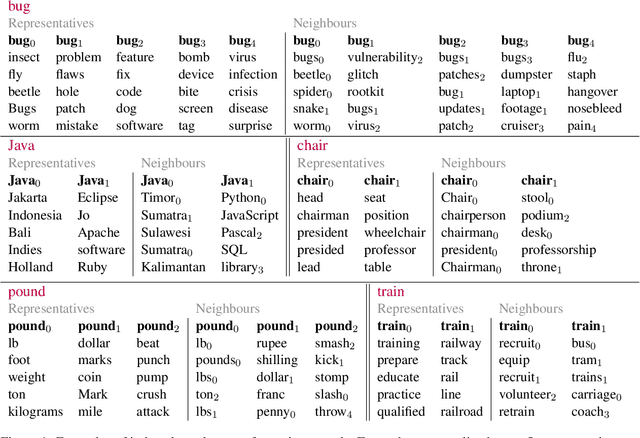


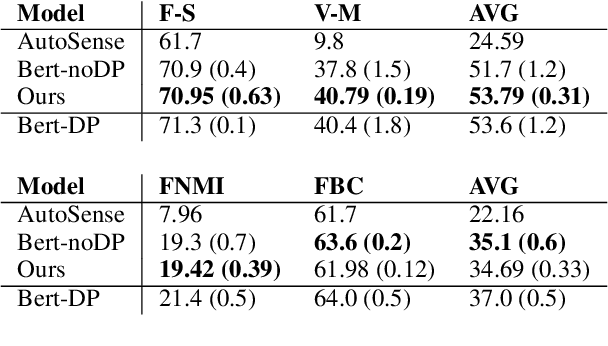
Abstract:We present a word-sense induction method based on pre-trained masked language models (MLMs), which can cheaply scale to large vocabularies and large corpora. The result is a corpus which is sense-tagged according to a corpus-derived sense inventory and where each sense is associated with indicative words. Evaluation on English Wikipedia that was sense-tagged using our method shows that both the induced senses, and the per-instance sense assignment, are of high quality even compared to WSD methods, such as Babelfy. Furthermore, by training a static word embeddings algorithm on the sense-tagged corpus, we obtain high-quality static senseful embeddings. These outperform existing senseful embeddings techniques on the WiC dataset and on a new outlier detection dataset we developed. The data driven nature of the algorithm allows to induce corpora-specific senses, which may not appear in standard sense inventories, as we demonstrate using a case study on the scientific domain.
Neural Extractive Search
Jun 08, 2021



Abstract:Domain experts often need to extract structured information from large corpora. We advocate for a search paradigm called ``extractive search'', in which a search query is enriched with capture-slots, to allow for such rapid extraction. Such an extractive search system can be built around syntactic structures, resulting in high-precision, low-recall results. We show how the recall can be improved using neural retrieval and alignment. The goals of this paper are to concisely introduce the extractive-search paradigm; and to demonstrate a prototype neural retrieval system for extractive search and its benefits and potential. Our prototype is available at \url{https://spike.neural-sim.apps.allenai.org/} and a video demonstration is available at \url{https://vimeo.com/559586687}.
Bootstrapping Relation Extractors using Syntactic Search by Examples
Feb 09, 2021



Abstract:The advent of neural-networks in NLP brought with it substantial improvements in supervised relation extraction. However, obtaining a sufficient quantity of training data remains a key challenge. In this work we propose a process for bootstrapping training datasets which can be performed quickly by non-NLP-experts. We take advantage of search engines over syntactic-graphs (Such as Shlain et al. (2020)) which expose a friendly by-example syntax. We use these to obtain positive examples by searching for sentences that are syntactically similar to user input examples. We apply this technique to relations from TACRED and DocRED and show that the resulting models are competitive with models trained on manually annotated data and on data obtained from distant supervision. The models also outperform models trained using NLG data augmentation techniques. Extending the search-based approach with the NLG method further improves the results.
Interactive Extractive Search over Biomedical Corpora
Jun 07, 2020


Abstract:We present a system that allows life-science researchers to search a linguistically annotated corpus of scientific texts using patterns over dependency graphs, as well as using patterns over token sequences and a powerful variant of boolean keyword queries. In contrast to previous attempts to dependency-based search, we introduce a light-weight query language that does not require the user to know the details of the underlying linguistic representations, and instead to query the corpus by providing an example sentence coupled with simple markup. Search is performed at an interactive speed due to efficient linguistic graph-indexing and retrieval engine. This allows for rapid exploration, development and refinement of user queries. We demonstrate the system using example workflows over two corpora: the PubMed corpus including 14,446,243 PubMed abstracts and the CORD-19 dataset, a collection of over 45,000 research papers focused on COVID-19 research. The system is publicly available at https://allenai.github.io/spike
Syntactic Search by Example
Jun 04, 2020
Abstract:We present a system that allows a user to search a large linguistically annotated corpus using syntactic patterns over dependency graphs. In contrast to previous attempts to this effect, we introduce a light-weight query language that does not require the user to know the details of the underlying syntactic representations, and instead to query the corpus by providing an example sentence coupled with simple markup. Search is performed at an interactive speed due to an efficient linguistic graph-indexing and retrieval engine. This allows for rapid exploration, development and refinement of syntax-based queries. We demonstrate the system using queries over two corpora: the English wikipedia, and a collection of English pubmed abstracts. A demo of the wikipedia system is available at: https://allenai.github.io/spike
 Add to Chrome
Add to Chrome Add to Firefox
Add to Firefox Add to Edge
Add to Edge